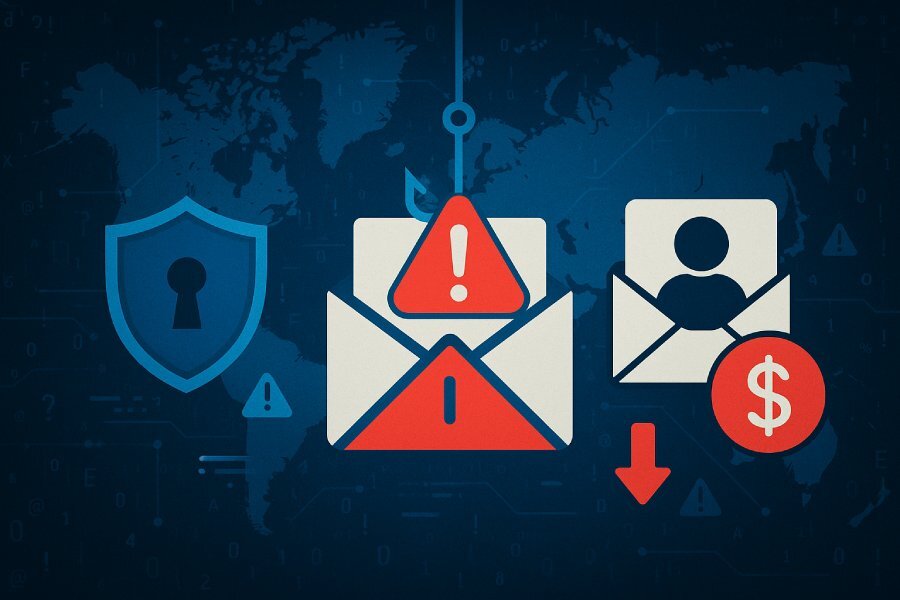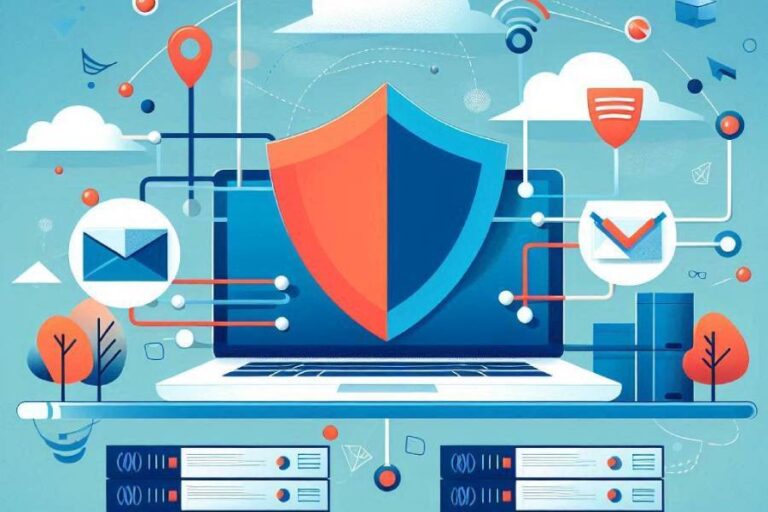Companies across the globe are embracing digital transformation, which means that everything from their businesses to operations and communication now happens online.
Speaking of online communication, email has certainly made things easier and seamless, but it has also opened doors for a new wave of cyber threats like email spoofing. In such attacks, cybercriminals forge the sender’s email address to make it look like the message is coming from a trusted source, like a colleague or client. Moreover, these emails are made to look so real and legitimate that you can hardly distinguish a fake from an authentic email.
What’s worse is that this scam has spread like a plague across industries and countries. For instance, in regions like the UAE and the wider GCC, around 23% of banks don’t bother protecting their domain from email fraud, which means that nearly one in four banks in the region are leaving their email systems open to impersonation.
So, what can be done to protect such organizations?
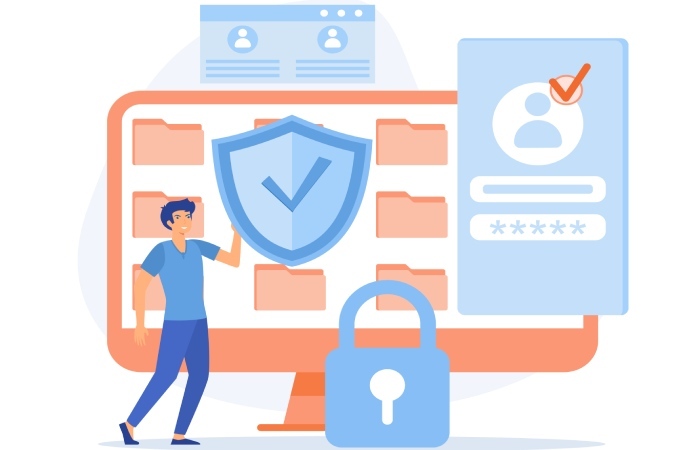
Strengthening defenses with email authentication
What’s wrong with these 23% of the banks is that they are leaving their domains unprotected, thereby allowing cybercriminals to send fake emails on their behalf. This is possible when organizations don’t have adequate defense mechanisms in place, like SPF, DKIM, and DMARC.
If they don’t have these protocols in place, anyone can misuse their domain to send fraudulent emails that look completely legitimate.
Here’s what each protocol does to protect your domain from email spoofing:
SPF (Sender Policy Framework)
SPF lists which sending servers are authorized to send emails on your behalf, so if an email comes from any other server, it’s flagged as suspicious.
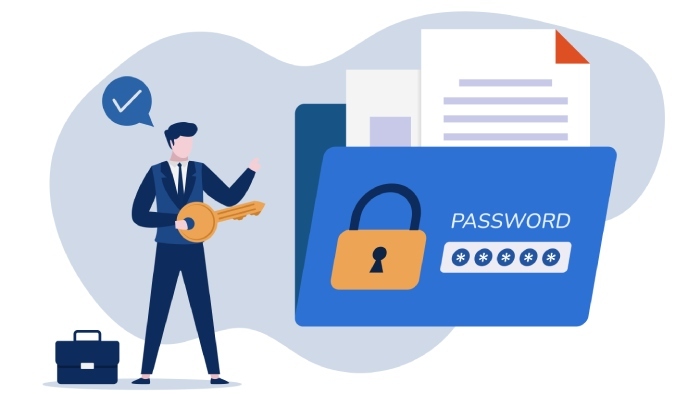
DKIM (DomainKeys Identified Mail)
DKIM adds a digital signature to your outgoing emails to ensure that they aren’t altered or tampered with while being sent.
DMARC (Domain-based Message Authentication, Reporting and Conformance)
DMARC works with SPF and DKIM to check if an email really comes from your domain. If it doesn’t, DMARC tells the receiving server what to do. It instructs the server to either block it, mark it as spam, or simply let it in.
Why do companies in the UAE and GCC need email authentication?
Email threats are on the rise
Email-based scams are undeniably becoming rampant across the globe, but the GCC region, particularly the UAE, Saudi Arabia, and Qatar, has recently seen a sharp surge. Out of these, the UAE tops the charts, ranking among the top targeted countries in the Middle East.
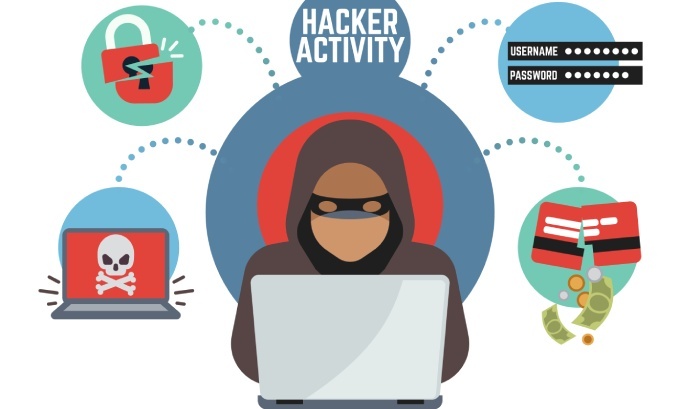
The reality is, this surge did not happen in isolation. As more and more businesses went online, the opportunities for cybercriminals grew, too. It became easier for them to target through email (the backbone of almost every online business). These emails often carried urgent requests like updating payment details, verifying accounts, or transferring funds. Because they appeared authentic, many people acted on them without a second thought.
And that’s exactly where the problem lies. Even the most secure systems can fail when a single misleading email slips through.
Financial impact of email-based attacks
Even though most attacks go unreported, we cannot overlook the financial damage they cause.
Across the GCC region, many companies have felt the blow of email spoofing and phishing scams that trick employees into transferring funds or sharing sensitive information, leading to significant financial losses.

In 2022, an Emirati real estate firm reportedly lost over AED 10 million after falling victim to a fake vendor invoice that looked completely genuine.
Another such incident happened at a Saudi oil & gas company when it lost over SAR 15 million after an attacker impersonated a senior executive.
These examples show how even the most established and well-protected companies cannot escape the wrath of email spoofing and phishing. Today’s attackers go above and beyond to ensure that the fraudulent email looks and sounds convincing. This means every big and small company needs a defense mechanism that can spot these scams before they cause damage. One of the most effective ways to do this is by using email authentication protocols like SPF, DKIM, and DMARC.
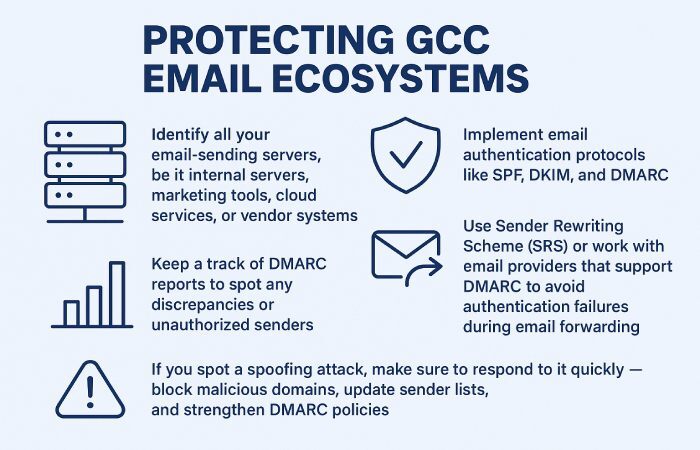
How can GCC organizations protect their email ecosystems?
- You must identify all your email-sending servers, be it internal servers, marketing tools, cloud services, or vendor systems.
- Implement email authentication protocols like SPF, DKIM, and DMARC.
- Keep a track of DMARC reports to spot any discrepancies or unauthorized senders.
- Use Sender Rewriting Scheme (SRS) or work with email providers that support DMARC to avoid authentication failures during email forwarding.
- If you spot a spoofing attack, make sure to respond to it quickly— block malicious domains, update sender lists, and strengthen DMARC policies.
- Make email security an ongoing practice and regularly review and update your security policies.
Need help implementing authentication protocols for your email ecosystem? Get in touch with us today! .
